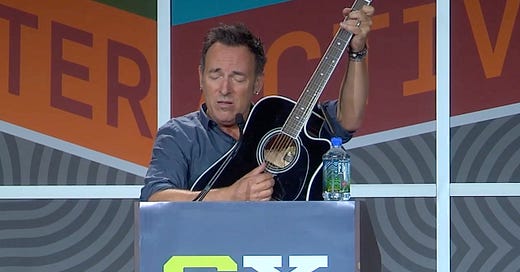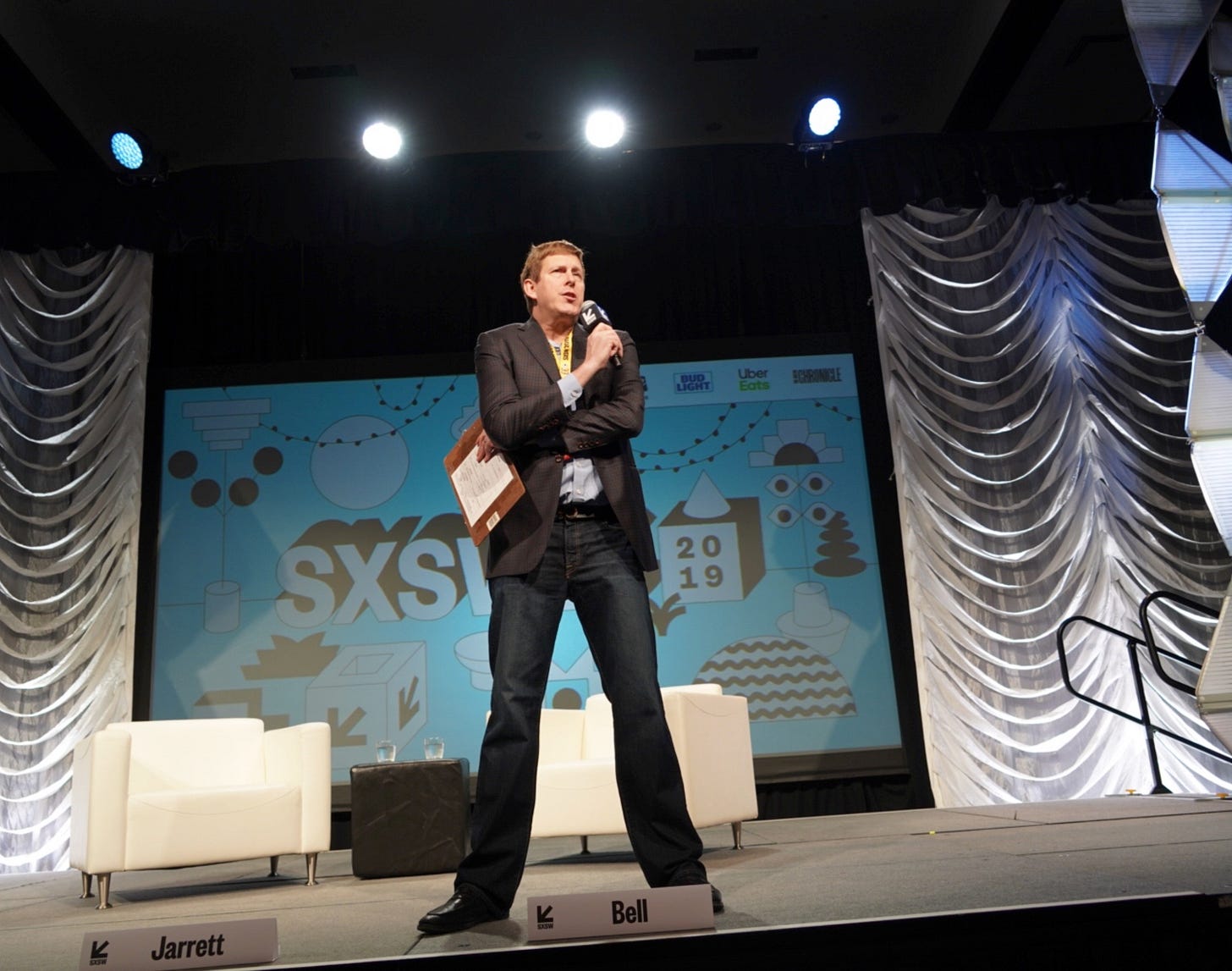What We Risk Losing: The Cultural Legacy of SXSW.
A festival that didn’t just reflect culture — it created it.
SXSW was never just a conference. Never just a music festival. Never just a place to launch a startup or screen an indie film. At its best, it was a live wire running through the center of American creative culture — raw, unpredictable, and alive with possibility.
This was the festival where Amy Winehouse stunned American audiences just weeks before her U.S. breakthrough. Where Katy Perry played to a half-full room in Austin, not long before becoming a global pop icon. Where The White Stripes, Norah Jones, The Strokes, Alabama Shakes, and John Mayer each turned early SXSW sets into momentum that launched careers. Bruce Springsteen delivered a raw, intimate keynote and surprise performance in 2012, reminding the crowd that every band starts out bar by bar, gig by gig. And Lady Gaga, who headlined in 2014 while riding the peak of her fame, used her set to spotlight up-and-coming performers — a nod to the festival’s roots as a launchpad, not a landing. This wasn’t a victory lap for the already famous — it was the moment before everything changed.
In tech, it wasn’t about product demos or buzzwords. It was about ideas catching fire. Twitter didn’t just debut at SXSW 2007 — it exploded, transforming from a novelty into a movement almost overnight. People used it to find each other, share moments, and shape the experience in real time. The app’s trajectory shifted that week — and so did the way we communicate. Two years later, Foursquare broke out in Austin. Soon after, apps like GroupMe, Highlight, and Uber all used SXSW as their early-stage slingshot. SXSW wasn’t just watching the future unfold. It was helping build it.
But it wasn’t just launches that defined the festival. It was the conversations — the moments when culture, politics, and innovation collided. In 2008, Mark Zuckerberg sat down with journalist Sarah Lacy in what became one of the most awkward, dissected interviews of his career. The crowd turned on them. It was chaotic, cringeworthy — and impossible to ignore.
The stage at SXSW also became a platform for whistleblowers and dissidents. In 2014, Edward Snowden livestreamed in from Moscow to challenge the U.S. surveillance state. A few years later, Chelsea Manning, just released from prison, spoke openly about government overreach and conscience. Even Julian Assange, polarizing as he was, found space on the SXSW stage — a sign of the festival’s commitment to presenting uncomfortable, world-shifting truths, no matter how controversial.
Elon Musk made multiple appearances at SXSW, using the spotlight to speak about space exploration, AI risk, and existential threats to humanity. In 2018, he warned the audience that artificial intelligence was more dangerous than nuclear weapons — and for a moment, the room went completely still. Whether you admired him or feared him, Musk’s presence underscored the festival’s role as a pulpit for world-changing ambition.
President Barack Obama came in 2016 and addressed the crowd not as a politician, but as a partner — urging the tech community to help solve public challenges. That same spirit echoed in Alexandria Ocasio-Cortez’s 2019 appearance, where she delivered a fierce, grounded talk on algorithmic injustice, digital ethics, and power. These weren’t TED Talks. They were unpredictable, essential, sometimes uncomfortable encounters with the future.
Futurists and theorists — people like Amy Webb, Shoshana Zuboff, and Cory Doctorow — returned year after year to challenge tech’s direction and offer alternative paths. Webb, in particular, became one of SXSW’s most compelling, prophetic voices, guiding audiences through the coming waves of AI, biotech, and geopolitics with clarity and wit. She didn’t just speak to the crowd — she helped them see the map.
The culture of the internet itself showed up, sometimes in chaotic form. In early SXSW sessions, figures like Christopher Poole ("moot"), founder of 4chan, took the stage to talk about anonymity, online communities, and the unruly side of digital life — long before it entered the mainstream conversation. SXSW welcomed it all: the utopians, the skeptics, the builders, and the breakers.
That was the soul of SXSW — unfiltered collision. Between music and media. Tech and politics. Dreams and dissent. It was unpredictable by design, a place where a garage band could play next to a global CEO, where a whistleblower could follow a comedian on stage, and where the line between art and invention didn’t just blur — it broke.
SXSW worked because it wasn’t tidy. It was a cacophony of voices, a cultural jam session where chaos bred creativity. Ideas clashed. New forms emerged. And at the center of that noise — steady, thoughtful, trusted — was Hugh Forrest. As a curator, convener, and cultural translator, Forrest didn’t just program panels. He protected the space where ideas could take root before they were branded, monetized, or sanded down.
He didn’t make SXSW a business. He made it a community — unpredictable, expansive, and alive.
To lose that — to flatten it into a product line or a portfolio brand — would be more than a change in ownership. It would be the end of an ecosystem that nurtured voices before they were safe, and movements before they were inevitable.
SXSW didn’t follow culture. It made culture. And the fight for its soul is not just about who holds the controlling stake. It’s about whether that spark, that friction, that beautiful mess — the thing that made SXSW matter — can survive the machinery now surrounding it.








